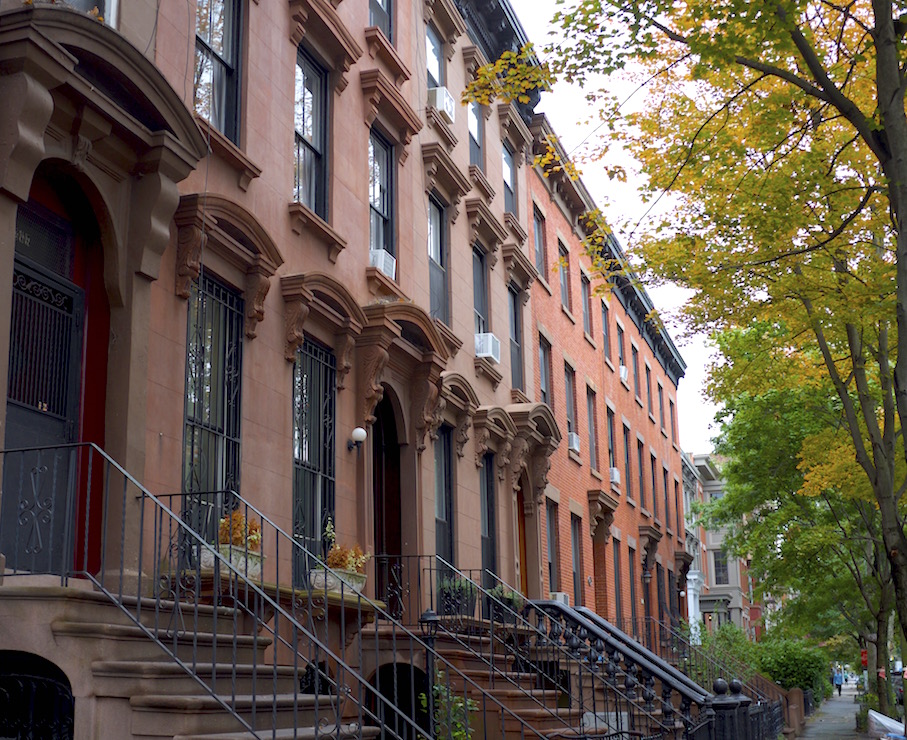
If you prefer taking your color cues from the landscape rather than from Paris, Milan or New York, try to look beyond the leaf pile embedded in our cultural consciousness. Even where the colors never change, children in autumn are made to draw leaves. True, the leaves are the season’s glory, and outdoor flowers don’t beckon to us as they do in spring and summer. But many do last well past summer.
Our favorite late bloomer is the chrysanthemum. Mums have become widely available in plastic containers, which we place inside decorative pots, often accented with ivy or maidengrass. Now, with so many colors of mums as well as varieties, from pompon to spider, there’s much one can do with size, shape and color; but for my taste, less is toujours more, and two colors are quite enough. The plants are inexpensive enough that you can buy a lot, but consider the setting: one might call out for one or two plants, another for a dozen. Whether you are going for something spare or florabundant, don’t dilute the effect with a little of this and a little of that—stick with one type. Depending on the weather and the state of our plants, we might start early with mums, refreshing with new plants late in the season.
Other flowers we enjoy early and late into fall are daisies, especially the perennial golden Rudbeckia, or black-eyed Susan. These also come in pots, but they don’t do well indoors, so we enjoy them on the terrace for as long as they last. We have some six-inch pots of tiny asters that work indoors or out, and we bring them in, placing them in corners where they don’t rival the mums, a defiant splash of color and life.
In fall we really have to begin to carve out our personal time and relaxation or we run the risk of not having any. Some call this deprivation virtue, but I call it a recipe for overeating. It shouldn’t take much rousing to go out for a good long walk in fall, especially in a park. In New York and Paris I love the energy on the streets when everyone is back from les conges d’été—the summer holidays. I enjoy meeting a friend or a relative (one I like) for brunch. We might then take a stroll through a new museum exhibition or (less edifying, perhaps) through SoHo’s stores—each in its way a wonderful distraction for a fall weekend. But make the plan and stick with it. Relentless self-application may seem ambitious, but it takes the edge off your A game. Successful people know how to let it alone.
The Journey to Pleasure Begins With Exertion
Fall is also a good time to reacquaint yourself with moderate free weights, especially if you’re over forty. A bit of extremely simple resistance training is a French woman’s answer to the hours of working aerobic machines that many American women favor. The French author Colette, with her proto-Pilates contraptions, was the first modern woman to work out. As I’ve said, short but focused intervals of exertion several times a week are all you need to be physically healthy. (The rest we do for our head.) A little goes a long way, so don’t let extremism overtake you. In the end, those who know how to stay fit while enjoying life come out ahead, mentally and physically.
Overall, a key to managing the uptick of seasonal stress is to increase your physical exertion indoors. Let’s face it, the shorter the days, the less time you’ll spend outside, where there is no couch or flat screen. I walk and cycle as much as I can. And take the stairs. But I also turn more regularly to yoga. I do more work around the house as well. Sometimes we must make do with a short interior journey, such as focusing on a simple task—the French woman’s zen. The smallest oases of serenity placed throughout the day can make all the difference to your heart and mental health.
Speaking of short journeys, my grandmother devised the perfect outdoor one for early Sunday mornings in the fall. We’d walk into the forest, where, under the canopy of trees not yet denuded, the light would dance all around us as we stood in the utter silence, drinking in all the wonderful odors of decay from the humid sous-bois (forest floor), a bit like tasting an old wine. (There is, incidentally, a specifically autumnal gastronomy connected with the business of decay. The noble rot on grapes gives some wines their excellence; a magnificent Stilton could be mistaken for another cheese left out too long. There’s sometimes a fine line between perfection and ruin.)
In the wood, we would catch sight of the occasional deer that hadn’t caught a whiff of us. Or we would collect mushrooms, guided by my grandmother’s faultless eye for distinguishing what was delicious from what was lethal in this dappled other world just a few hundred meters from her garden. A far cry from the supermarket shrink-wrapped buttons that may not kill you, but the taste is about equal to the thrill of finding them. But even more salutary was being out there in perfect stillness, in another world.
